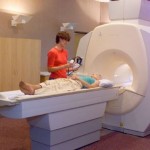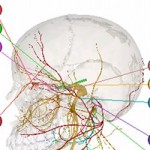Facial pain and headache syndromes are often seen in the primary care setting. These conditions are usually severe, and the patient presents in obvious distress. A careful history is paramount and should include the following data:
-
Age. Facial pain is usually found in adults; it is rare in children.
- Gender. Facial pain may be more common in women or affect men and women equally. However, women are more likely than men to seek care for facial pain.
- Location. Pain may be unilateral or bilateral.
- Quality of pain. Pain may be described as sharp, aching, lancinating (stabbing), or like an “electric shock.”
- Temporality. Pain may occur in paroxysmal remissions or may be constant.
- Trigger zones. These can be remote from the area of pain but can help to identify the associated nerve root.
- Trigger stimuli. These may include slight touch, wind, speaking, or even shaving, or brushing teeth.
Physical examination is usually within normal limits but should include:
- Complete eye examination;
- Ear, nose, throat, and neck evaluation;
- Pterygoid muscle (used for mastication) assessment;
- Cranial nerve assessment;
and - Sensory and motor assessment.
Imaging studies should be limited to magnetic resonance imaging of the brain with and without gadolinium. The computed tomography scan has a lower yield because of poorer resolution of the posterior fossa and cranial nerves. Before ordering contrast studies, the provider should consult with the radiologist about the need to assess blood urea nitrogen, creatinine, and glomerular filtration rate in patients older than 50 years. Some gadolinium dyes cannot be administered to patients with abnormal renal function, and other arrangements must be made.
Common presentations of facial pain or headache syndromes that may be included in the differential diagnosis are described below.
Differential Diagnosis of Facial Pain
Trauma and Rhinosinusitis
Facial pain generally occurs after sinus or dental surgery, or skull or facial trauma. The etiology of pain depends on the precipitating event. Acute rhinosinusitis often presents with pain located over the affected sinus. Treatment should be based on the clinical picture and may include antibiotic therapy.
Cranial Nerves Gone Amiss
TN and other neuropathic (meaning “nerve painâ€) facial disorders occur when something has gone amiss with one or more of the 12 pairs of cranial nerves that branch out from the brain stem, just below and into your skull. Although your body is made up of almost a million nerves, your brain spends almost 30% of its time processing information related to your face. Likewise, due to its rich blood supply and exposure, the face is one of the most sensitive areas of the body. This helps to shed some light on why it can hurt so badly: when a facial nerve, which is a “high priority†to your brain, sends out a message of injury, your brain cannot help but respond vigorously with a strong pain response.
Trigeminal Neuralgia
Trigeminal neuralgia is a disorder of the sensory divisions of the trigeminal nerve. Characteristics include:
- Brief paroxysms of “electric shock-like” pain in one or more divisions of the trigeminal nerve (cranial nerve V). This condition manifests in “machine-gun-like” volleys lasting a few seconds to a minute, recurring frequently for weeks.
- Trigeminal neuralgia is typically unilateral. Some patients have bilateral pain (often related to underlying multiple sclerosis).
- A dull ache that persists between spasms of pain.
How Patients Describe their Pain
Patients who struggle with neuropathic facial pain have described it like this:
- “The pain is tearing, shredding, burning, deep pressure pain and/or it is electric in sensation.â€
- “It’s like a miniature lightning bolt has struck my face.â€
- “I feel like I’m being stabbed; or my face is being sawed in half.â€
- “Have you ever had to fly while you had a bad sinus infection and experienced burning, searing pain? It’s like that.â€
- “I feel like my skin, my teeth and my gums are being ripped off.â€
- “It’s like the dentist is filling a cavity without using Novocain.â€
NOTE: These kinds of pain can be overwhelming at times. If you or someone you care for is in such terrible pain that there is risk of suicide, please contact your local physician or call the National Suicide Prevention Hotline.
Patient age may suggest the many possible etiologies of trigeminal neuralgia:
- In the elderly, vascular compression of the trigeminal nerve by abnormal arterial loops may cause trigeminal neuralgia;
- In younger patients, demyelinating disease or compression of the nerve by myeloma, meningioma, cholesteatoma, or aneurysm (including lesions of the cavernous sinus) may cause pain; and
- Peripheral pathology (such as segmental demyelination in the trigeminal root), central nervous system pathology, or a combination of both peripheral and central pathology, which is currently considered most likely, can cause trigeminal neuralgia.
Agents such as carbamazepine, baclofen, and phenytoin have analgesic effects in many types of neuropathic pain, including trigeminal neuralgia. Surgical procedures are only considered for patients with persistent pain.


